
INSPIRED by stories of fellow bird photographers who have birded and photographed birds in various countries such as Colombia, Costa Rica, Thailand, and Vietnam, a group of Filipino bird photographers has banded together to offer bird photography tours in the Philippines for foreign bird photographers and birders.
While birding sites around the country have already been visited by many bird photographers, usually done in three to four days, there are only a few who attempt to offer birding tours for foreigners. Birdwatching tours have long been organized by birdwatchers, but still, the number of avian tour operators is very small, and most offer hard-core birding that would usually require hiking for hours and is not designed for bird photography.
Most foreign bird photographers that have birded in the Philippines almost always complain of the difficulty of photographing birds in the country because, on top of the challenges in getting to the sites, the birds are also very shy, a behavior they have developed because of hunting. Birds in other countries are friendlier and many establishments have set up bird feeding stations and bird hides that facilitate the capture of quality frames. To validate once again the status of birding sites and the degree of difficulty in photographing Philippine endemic birds, four members of Haring Ibon and Bird Finder Philippines – Djop Tabaranza, Ben Maputi, Vinz Pascua, and yours truly – embarked on a 12-day bird photography tour around Mindanao.
Day 1 – Mapawa, Cugman, Cagayan de Oro City
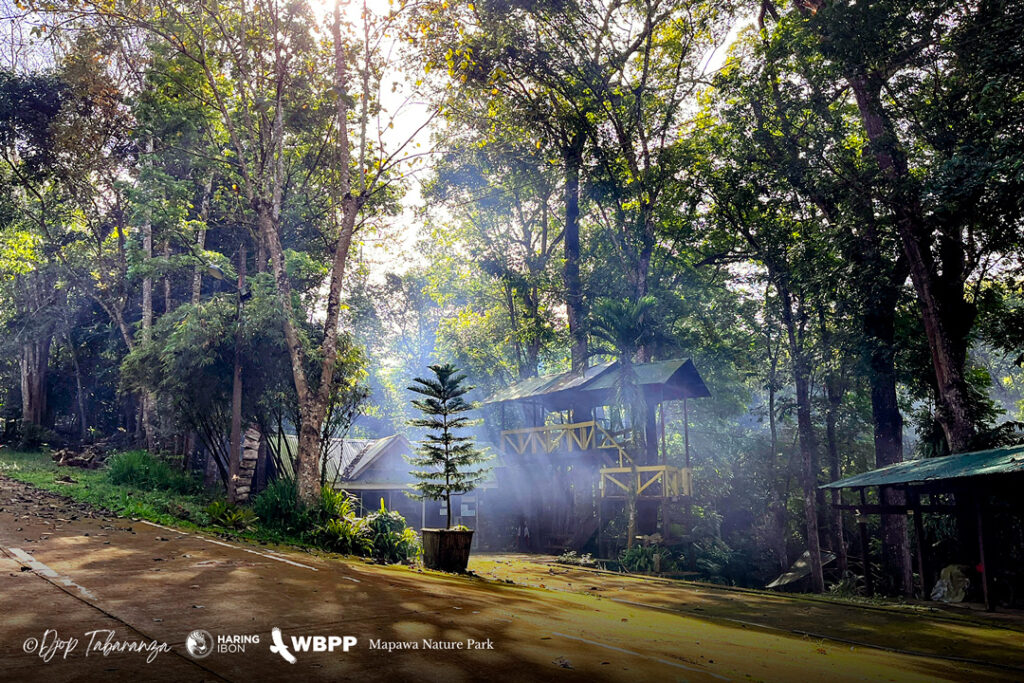
It was already past noon when we reached Mapawa Nature Park, and to our surprise, our Bird Finder Ronnel “Dodong” Paglinawan has already prepared a hide at the roadside for a stake out of the Southern Philippine Dwarf Kingfishers which, he said, have already laid eggs inside a termite mound just across the road.

Rain poured, but we waited. After a couple of hours, an impatient Vinz got up and went after a pair of Short-billed Brown-doves and a Philippine Magpie-robin calling nearby, while the rest of us waited still. And the sun went down and decided to try again the following day.
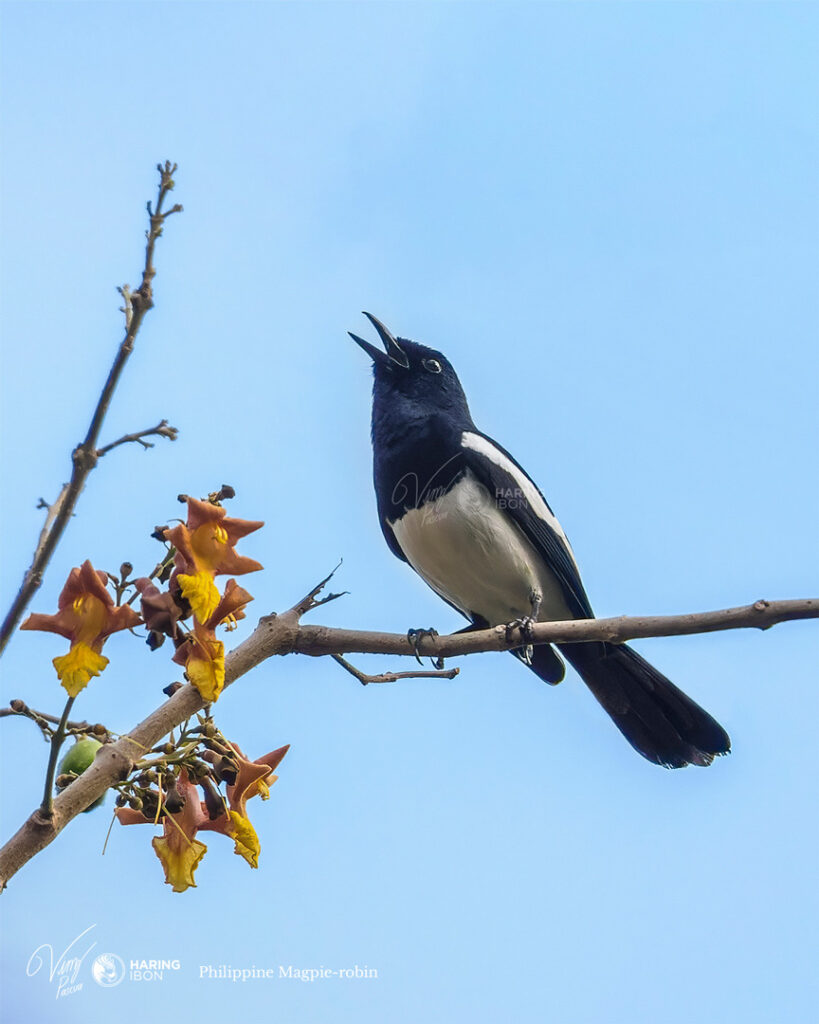
Mapawa Nature Park is a forest and highland pasture, part of a 2,500-hectare property managed and operated by the Emmanuel Pelaez Ranch.
Emmanuel Pelaez was the Vice President of the late President Diosdado Macapagal from 1961 to 1965.
Dodong said the park is currently not operational as the land tenure is in question following an ancestral domain claim that led to the non-renewal of the lease. The road from the highway is mostly paved except for a portion that remains muddy as the owner refused to donate a patch of his land where the road traverses. We no longer entered the park as the nesting area of the kingfisher is outside of it.
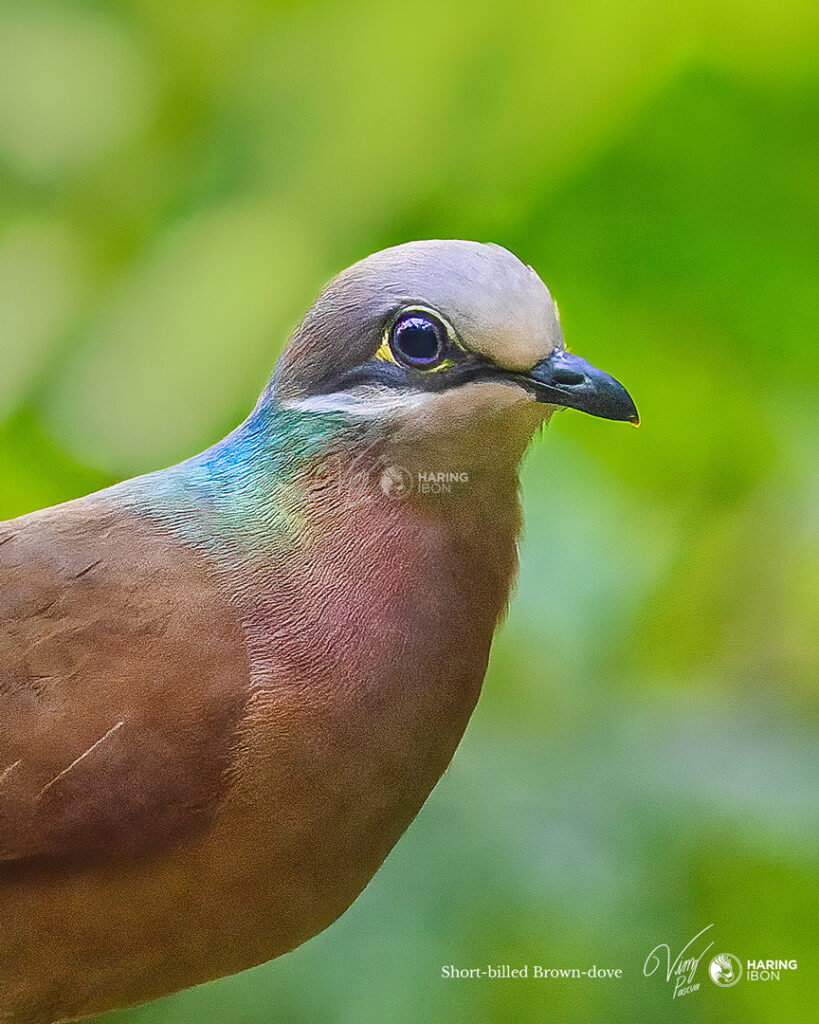
Day 2 – Cagayan de Oro City and Intavas, Impasug-Ong, Bukidnon
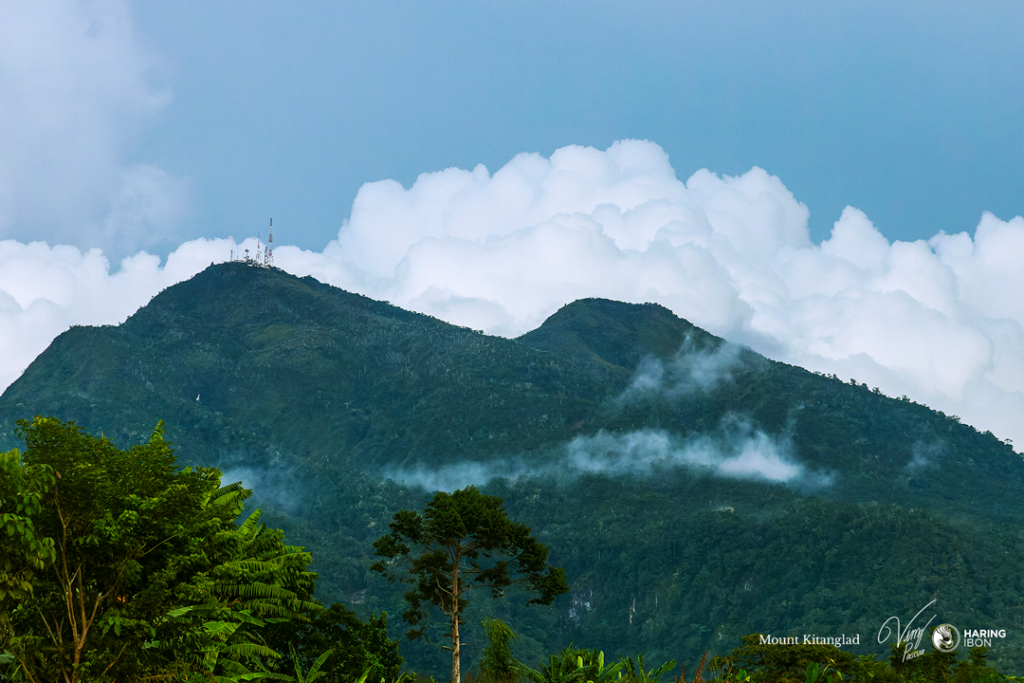


Daybreak is the best time to bird as our feathered friends usually wake up to a new day by feeding and showing off, and the best daybreak for birding is the one after a previous day and night of rain since birds will be very eager to feed and to dry their feathers out.
True enough, we were just alighting from our vehicle when we heard a familiar call and Bird Finder Dodong was already pointing to the Southern Philippine Dwarf Kingfisher just a few meters from the road. We could no longer approach our hide so we shot just near our vehicle. Over the next couple of hours, the kingfishers appeared, perched, and flew away several times but not without giving us enough time to frame each time.
Considering they were a nesting pair, we tried to be farther from the nest. After taking hundreds of shots, we decided to leave them and go inside the park and look for the Southern Silvery Kingfisher.
The park was dead silent. The absence of people in the park was quite noticeable, including the untended grasses and plants. We looked for the Southern Silvery Kingfisher along the river, but it was not there.
Dodong said they must have been driven away by those coming early to wash clothes. We played the song of the Southern Rufous Paradise-flycatcher, having previous experience of its presence in the park years ago. Instead, we saw a Drongo-cuckoo flying around and posing, which was followed by the familiar call and flight pattern of the orange flycatcher we were calling. We left before lunch to catch up with the birds of Intavas.

At Intavas, we heard the calls of the Red-eared Parrotfinch. The presence of hundreds of wild sunflowers blooming around assured us that the parrotfinches were there. These birds eat the seeds of wild sunflowers. We saw one and then another, but their shyness hindered us from framing them. The sky above us showed Oriental Honey Buzzards and Rufous-bellied Eagle. The other star birds of Intavas, however, did not allow us to see and photograph them, even if our Bird Finder Marlon Sayoron, who belongs to the Higaonon tribe, accompanied us and even brought us some food from the birthday celebration of his son Daryl.
There is no argument that mere human appearance in the birds’ habitat and environment is an actual disturbance, whether one belongs to the community, a birdwatcher, a bird photographer, a tourist, or even a biker or hiker. Minimizing such disturbance is always the foremost consideration in birdwatching, photographing birds, and in enjoying nature. Once one sees some kind of reluctance, uneasiness, or a break in the seemingly normal behavior of the bird, it is time to move away and let them be.
Early morning is always the best time to bird when light is manageable. We have yet to adopt and practice rest time between 10 am to 2 pm as this is the time when birds are noticeably not around and the sun is at its harshest, so we might as well use the time to sleep and rest. But as the saying goes, kailangang masulit ang bawat oras, sayang naman ang gastos at pagkakataon, so we continue to bird. The way to Intavas is carpeted with blooming wild sunflowers, and hundreds and thousands of yellow dots along the road, in the farms, around gardens, and everywhere. But that excitement blows away when the vehicle reaches the highest point that can be navigated and the hiking starts. The rocky trail is much worse this time. Several years ago, vehicles could still reach the birding area in the shade, but this time, we had to hike one to two kilometers of steep rocky trail before reaching the birding area.
Noticeable also is the farming that is encroaching on the lower portion of the protected area. Intavas in Impasug-ong is the jump-off and gateway to Mt. Kitanglad, a dormant volcano, which is an ASEAN Heritage Park and the fourth highest elevation (2,938 meters asl) in the Philippines. It was in Intavas that I have seen the Philippine Eagle for the second time soaring above. Bird Finder Ben would always tell us that the name “Kitanglad” was derived from a legend that there was once a great flood that submerged the native lands of Bukidnon and only the tip of the mountain, the size of a “tanglad” (lemon grass), remained visible “kita”” in Visayan.
Day 3 – Cinchona, Lantapan, Bukidnon


In Cinchona, we decided to split into two groups. Djop and Vinz, who have never photographed the Philippine Eagle, would hike up to the nesting tree site to photograph the young Philippine Eagle, while Ben and I would stake out the parents for birds in flight shots. Bird Finder Emeliano “Blackie” Lumiston accompanied Djop and Vinz. They immediately started their climb as soon as we finished breakfast at the Cinchona Heritage Park. A group of college students were about to have their breakfast as they they were scheduled to climb at 10 a.m..
Djop and Vinz had prepared for the climb and applied necessary measures to fend off the blood sucking limatiks (forest leeches). After a 45-minute climb, Bird Finder Blackie and fellow members of the Kitanglad Guard Volunteers (KGV) started to look for the young adult.
After about seven hours of intense searching, they came back without finding the young eagle who was christened Pamayareg III by avid birders (III since it was the third young eagle seen in the last six years. I have photographed a young eagle in that same place more than a decade ago).
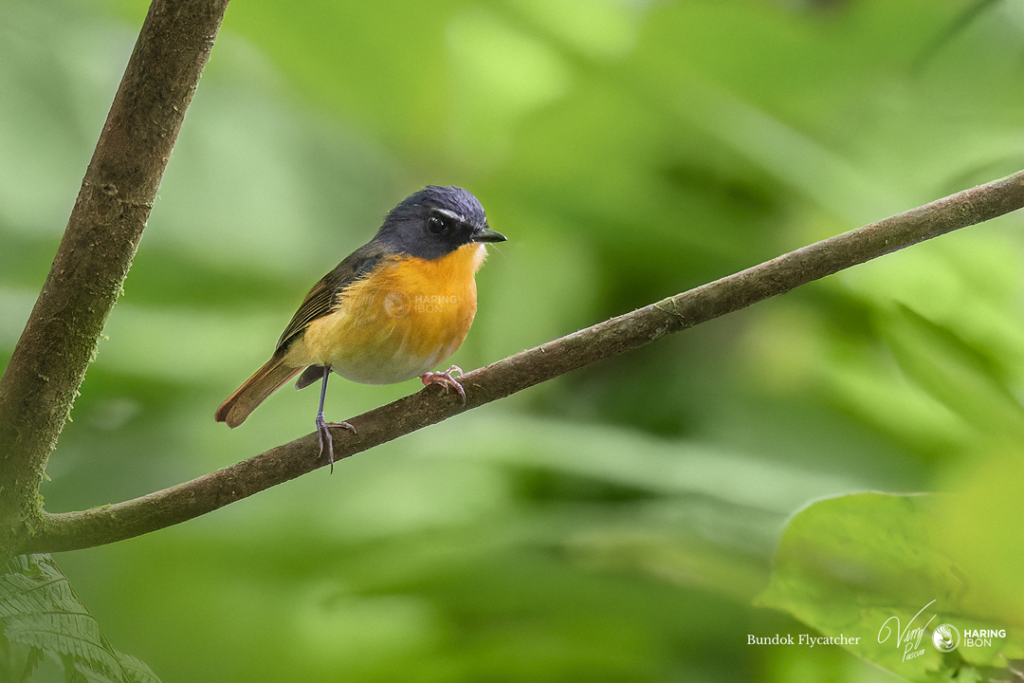

They did find the food left overs which either of the parents have provided, but nowhere was the young eagle to be found. The young eagle is already about ten-months-old and might have flown to nearby areas. Normally, these young eagles are taught to fly and hunt by their parents for one year, after which it will be driven away from the territory.
At the opposite side of the forest in another ridge, Ben and I waited for the parent Philippine Eagles. They were no show too, but we were able to see Brahminy Kites, Philippine Honey Buzzard, Colasisi and other birds in the area.
Come noon time, Ben and I had our lunch at a café at the outskirts of the forest reserve, then continued to stake out the parent Philippine Eagles again, this time at the other opposite side of the nesting site. Still, no flying eagles appeared. At about 4:00PM, we returned to the forest reserve to look for the Silvery and Blue-capped Kingfishers, but they were absent. Then the college students started appearing from the hiking trail, one after the other, happily shouting about their successful hiking feat.
Djop, Vinz, Blackie and the others appeared last. On their faces can be seen the frustration of not seeing the young eagle. Their consolation were photos of endemic Bundok Flycatchers, Yellow-bellied Whistlers, and Cinnamon Ibons. This was the first time that the young eagle was not sighted since about four months ago when birders started to hike and observe the growing raptor.
There are no guarantees in birding. There is no assurance that the target bird will be there or will appear. Birding and Bird Photography is one undertaking where a lot of considerations are completely out of one’s control. The target model in the wild has its own mind, it cannot be controlled and it is usually shy. The weather is another factor, and although reliable predictions are already available, the mountains have their own weather patterns. What remains under control is one’s fitness and readiness, gear and equipment, time and determination.
Day 4 – Kuden, Senator Ninoy Aquino, Sultan Kudarat
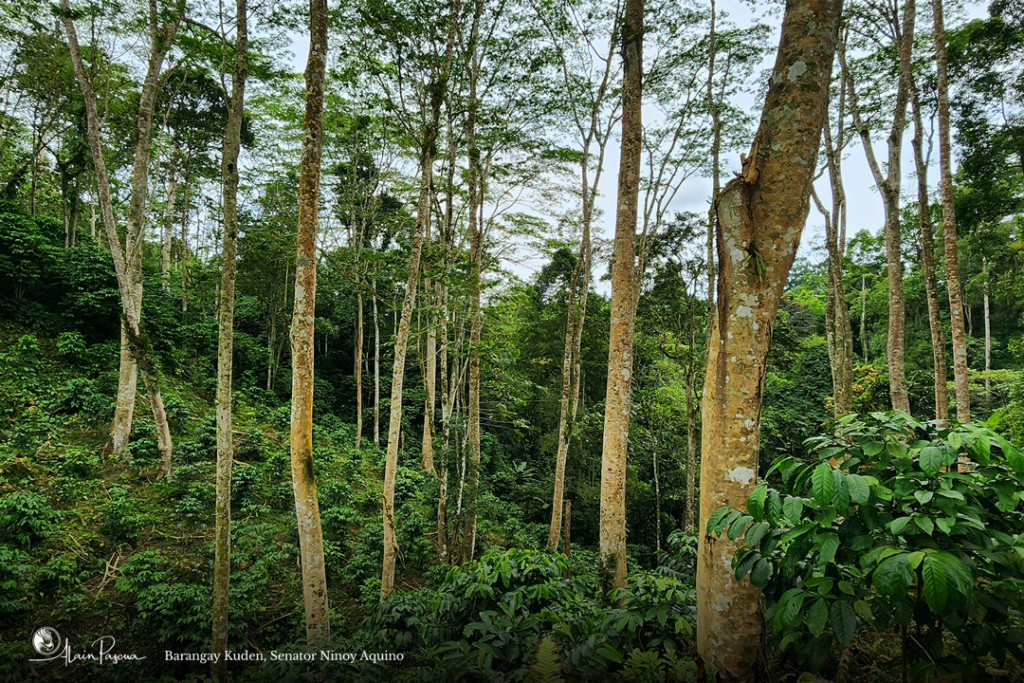

Our day started with Vice Mayor Rafael George Flauta III. He is a good friend of Bird Finder Ben. We went to the municipal hall to register at the Tourism Office and met with Mayor Randy L. Ecija. We registered again at the police station before proceeding to the birding area, but not without a tourism officer and a couple of police officers escorting us. Before we entered the birding area, we registered again at the Barangay Hall. The road to the birding area was rocky and bumpy, only 4×4 vehicles are able to navigate such terrain. When we stopped and started to walk, we were joined by the representatives of the Manobo-Dulangan tribe.
A couple of Mindanao Hornbills instantly graced my frames, while Vinz, Djop and Ben got a pair of Philippine Honey-buzzards. A few Philippine Spine-tailed Swifts whizzed by with several swiftlets overhead. Every now and then we would hear the loud calls of the Kalaws, the Southern Rufous Hornbills, whose presence is dominant in Barangay Kuden Forest Reserve. Our day ended seeing a couple of Kalaws feed on a nearby tree along the road together with some Phillipine Green-Pigeons.
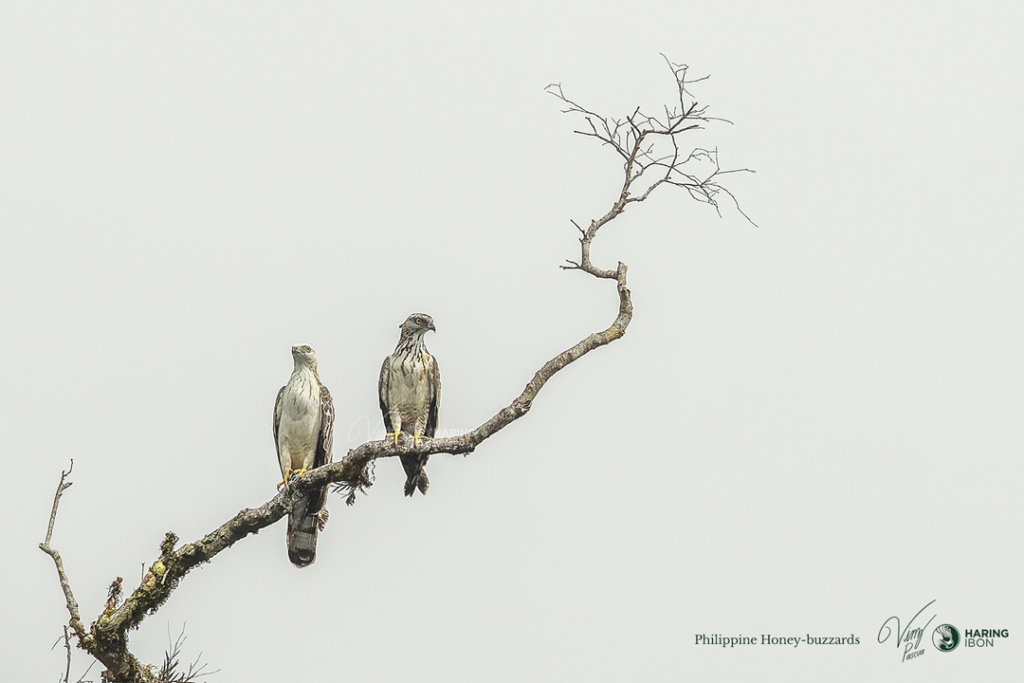
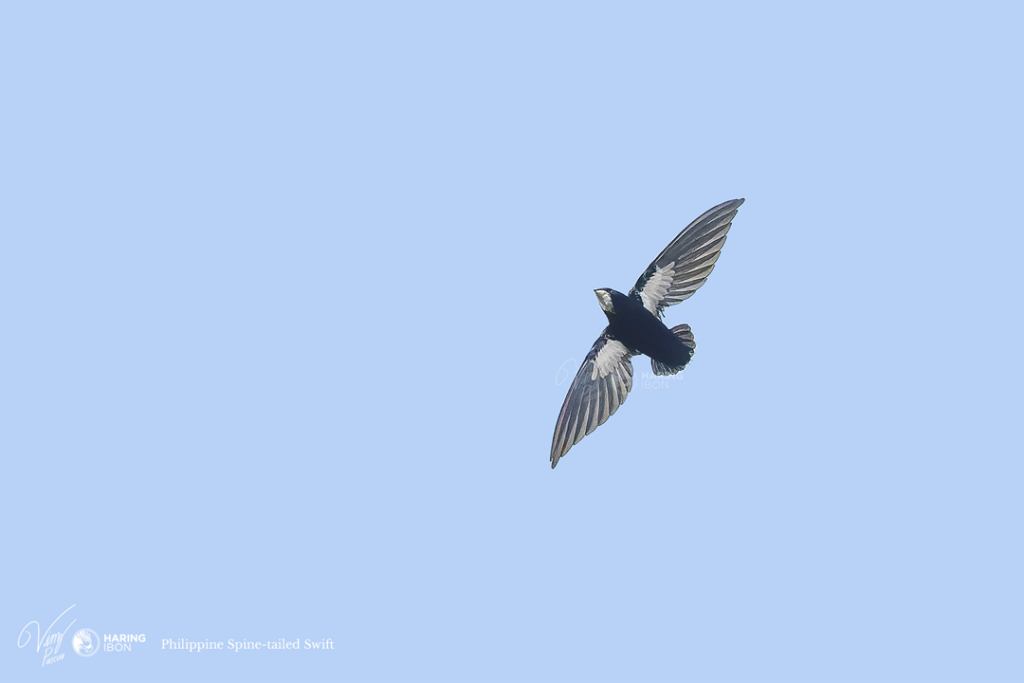
The way to Senator Ninoy Aquino (SNA) in Sultan Kudarat from Bukidnon is quite far, but one immediately notices the condition of the road once you enter the territory of BARMM – the Bangsamoro Autonomous Region of Muslim Mindanao. The smooth highway transforms into one with several potholes and unpaved portions. Entering SNA is worse as road slips can be seen and becomes the wonder instead of the zigzag roads and great mountainous landscape that defined the entry to the town. Road slips are those hanging concretes with no soil foundation or those that have fallen due to eroded portions. We were guessing earthquakes, erosion, sink holes and even road workmanship as causes of such road slips. The town was named after Senator Benigno Ninoy Aquino, Sr., at the time when his wife Corazon was President of the Republic. Formerly known to be Kulaman Valley, the town sits on a plain surrounded by mountain ranges.
One would suspect that the town sits on a former crater of a very big volcano, much more when one hears of the presence of big sinkholes from the local officials themselves. The birding area in Barangay Kuden is about 45 minutes from the town center. It is part of the approximately 29,000 hectares Integrated Forest Management Agreement (IFMA) awarded to David M Consunji, Inc. (DMCI) amidst ancestral domain claims and strong tribal opposition.
The registration protocols at the local level is something that has to be reviewed as it eats up about 2-3 hours, and when done in the morning, steals aways the golden hours of birding. The departments of tourism and environment, together with the local government units, must agree to come up with uniform registration policies and institute efficient online processes in order to facilitate such protocols. The security measures and the desire to bird early must meet at common terms in order to satisfy both needs.
Day 5 – Kuden, Senator Ninoy Aquino, Sultan Kudarat
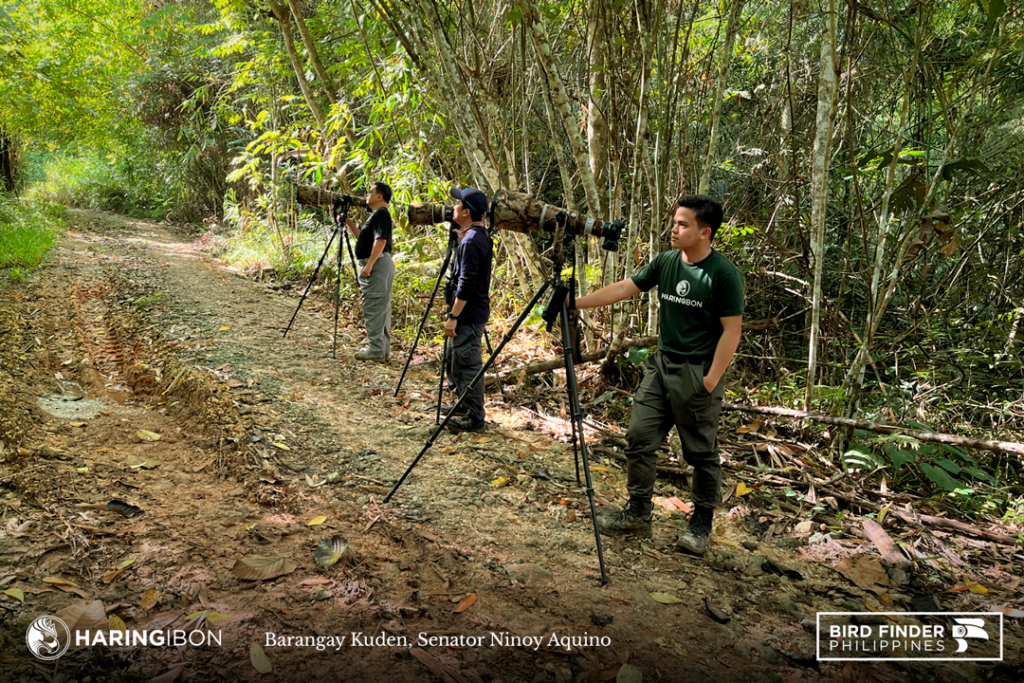

Taking note from the previous day’s exploration the areas of fruiting trees and possible bird tambayans, our next day was more organized and targeted. A fruiting balete tree attracted Southern Rufous Hornbills, Philippine Green-pigeons, and Yellow-breasted Fruit-doves. Short-billed Brown-doves, Philippine Bulbuls, Rusty-crowned Babblers and Mindanao Pygmy Babblers were feeding on a fruit-laden Lipang Kalabaw or stinging nettle tree we found the previous day.
We engaged the tribe leaders to prepare our breakfast and lunch, but we ate all the cooked native chicken for breakfast, so when lunch time came, we ended up buying canned goods of sardines and corned beef at the village. We lunched in a small nipa hut above a flowing river where children would swim and play naked, not minding our presence. The calls of kalaws can be heard every once in a while.


This time, asking the locals about birds seemed to be easier than the previous day. We introduced and gave them Haring Ibon Trading cards that feature endemic birds and showed them photos of potential birds in their area and they would tell us their local names. Our Bird Finder Moroy Cablas from the Tourism Office and Manong Egew, the Indigenous People Mandatory Representative (IPMR), wrote the local names at the back of the cards.
The Haring Ibon trading cards transformed from being a game for children into reference pocket photos for local guides. The engagement and empowerment of the local tribe and the local tourism and environment officers are fundamentals in birding. During lunch over sardines and corned beef, our police officer-escort asked the tribal leader for a portion of an anti-snake remedy which got us all curious about it. The item is called Duka, not an agimat or talisman but more of a medicine that is made from the sap of a rare tree that they use for curing snake bites. The police officers swore that the sap is indeed very effective and shared experiences about it. It cannot be bought, it must be given, and it must always be carried in one’s wallet to keep one safe from snakes. It was also at this time that the sighting of the Philippine Eagle in their hunting grounds was revealed to us.
Day 6 — Mt. Melibingoy, T’boli, South Cotabato


The mountain towering over the town of T’boli named after the indigenous natives themselves, the T’boli people, is Mt. Melibingoy with its highest peak at 1,750 meters. It has a crater named Lake Holon which formed after an eruption five centuries ago. The mountain and the lake are also known as Mt. Parker and Lake Maughan, in honor of American surveyors whose plane crashed in the site.
The scenery is the best old forest landscape that can be seen in that part of Mindanao. Big, tall trees still dominate the environment even if a highway cuts through it. There are some road slips but the road condition is better than SNA, yet the road terrain in terms of ascent and descent angles remains quite challenging. A bit disturbing too is the erosion below the road just across the habitat of the endangered Mindanao Lorikeets.


The early morning light brought us great views of Philippine Serpent Eagles, Brahminy Kites, and the Mindanao endemic McGregor’s Cuckooshrike, a species named after Australian Ornithologist Richard McGregor. After birding in the morning, we tried another road that leads to a nearby restaurant that happened to be the extension of the popular hotel in town.
There, to our surprise, we met the mother of incumbent Mayor Keo Dayle T. Tuan. She showed us the T’boli inspired accommodations and facilities, one that inspired us to book there for future birding days. The place offers serenity, breathing space in the middle of mountain ranges, and close proximity to the birding area.
The afternoon taught us that the Mindanao Lorikeets are more active before roosting in the late afternoon than after waking up in the early morning, and that they have many roosting sites. Their nests are hidden by the many orchids and mosses that adorned the tall trees, and their calls would always betray their presence. We also learned that the fruits of the vine kamang-kamang feed several bird and insect species from its infancy until its withering, a miracle fruit in the forest. Kamang-kamang’s scientific name is Heptapleurum ovoideum, the family where umbrella plants or trees belong.
Day 7 – Mt. Melibingoy, T’boli, South Cotabato

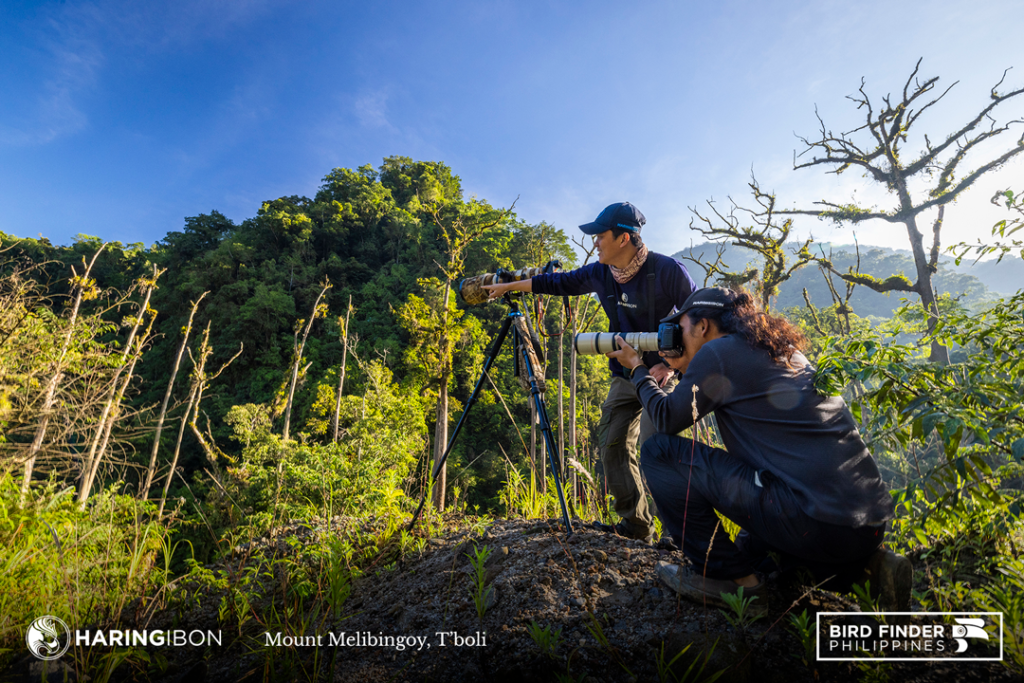

Our second day at T’boli was about perfecting what we had done in the previous day. We were more relaxed and in no hurry even if we were scheduled to go to General Santos City before noon. We had already captured our targets, so it was just the chance to make better frames.
A colorful start to our day was the Yellow-breasted Fruit-dove, which was best photographed by Ben. Afterwards, our primary target, the elusive T’boli Sunbird was finally seen and photographed this time. We also photographed mixed flocks of Stripe-breasted Rhabdornises, Philippine Bulbuls, Short-tailed Starlings, Colasisis, and Eye-browed Thrushes all feeding on clusters of kamang-kamang fruits.

Central to our ideas in T’boli is the declaration of the site, specifically the General Santos-T’boli Road traversing Mount Parker, as a protected area via local government ordinance or any other government measures. The point is not to hide in secrecy the endangered bird habitats but to let the public know that they are passing by and threading on areas sacred to the birds, being their last frontier and habitat.
In that way, commuters and the public are made aware of the importance of the area and the wildlife that thrive in it. This is quite the opposite of known and more popular frameworks where habitats of endangered species are most often hidden from public knowledge. The presence of a highway in this case dictate a different approach – that of revealing the habitat and asking the public to be aware of such, requiring due respect and carefulness in passing by and in observing and enjoying their presence.
We took our lunch in General Santos City which is about an hour’s drive from T’boli via the birding road. From GenSan, we proceeded to Davao City.
Day 8 – Eden and Malagos, Davao City

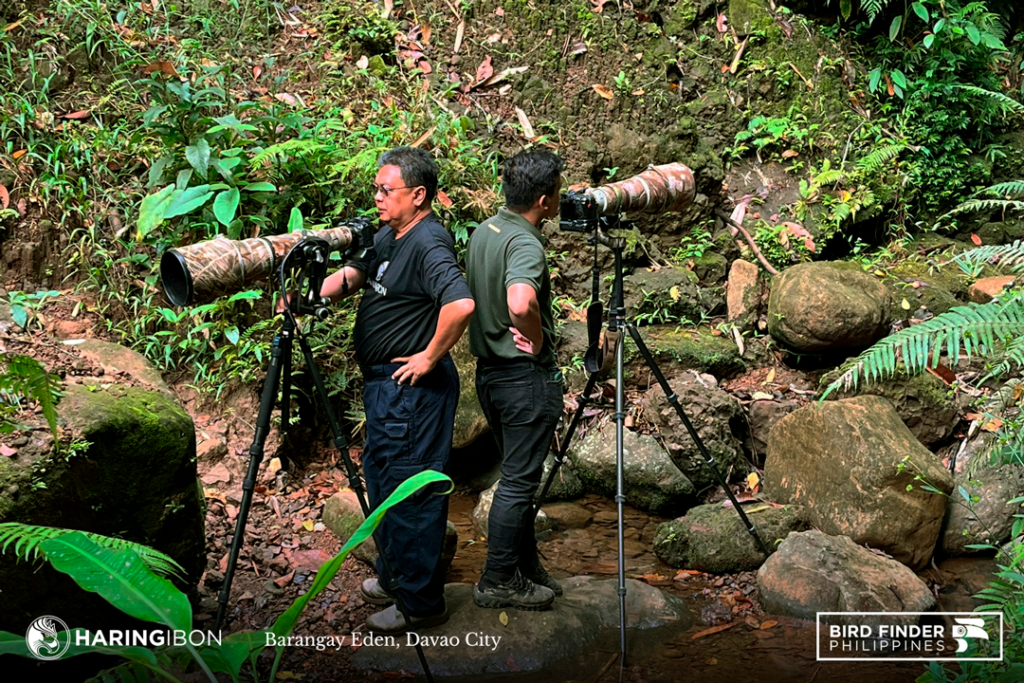
Before proceeding to Toril in Davao, we detoured to Baganihan in Marilog to see the bamboo architecture that has been mastered and taught to builders and architects. It was already late when we reached our hotel. Traffic is one remarkable thing that defined our appreciation of Davao City.

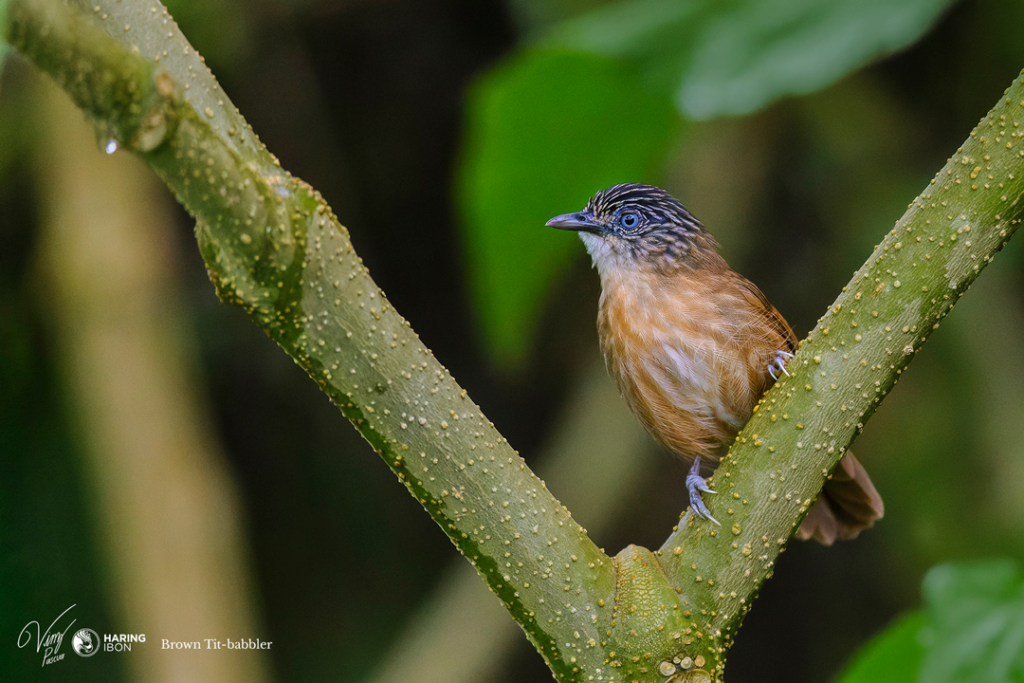
Our main consideration was to see the Whiskered Flowerpecker and the Cryptic Flycatcher, but both were nowhere to be found at the site near the foot of Mt. Talomo. The flowerpecker was sighted but was not photographed, while the flycatcher was not seen, probably because of the noise of a home-made marble air gun being fired several times by kids which might have scared them off. Oblivious to the noise were Brown Tit-babblers, Elegant Tits, and Scarlet Minivets.
Our visit at the Philippine Eagle Center became the redeeming activity of the day even if no Philippine Eagle was displayed publicly outside of the cage. Their presence and photo opportunities in cages are good enough to have some portraits that cannot be made in the wild. It was in this place where my photograph “Ang Banog” that graces the cover of the book “All the Birds of the World” was taken in 2010.
There were other raptors on display at the center and other animals as well. The place also has wild birds freely flying around. They may have been attracted by the animals in cages and by the food and security in the area. Perhaps these wild birds realized that they cannot be preyed on by the biggest flying raptor in the country as they are kept at bay. A visit to the Philippine Eagle Center brings one the opportunity to be with the Philippine Eagle up close, a chance that can not be made when seeing them in the wild. It is also a redeeming act when one miserably fails to see it in the wild.
The stores lining the entrance to the center are all selling products with Philippine Eagle portraits printed on them. Among those merchandise is the portrait of fellow birdwatcher Arnel Telesforo whose Philippine Eagle drawing became the logo and mascot of the 1st Asian Bird Fair held in Davao City in 2010 emblazoned on t-shirts, and my portraits of the Philippine Eagle printed on magnets, bottle openers and sublimation shirts. The suppliers of these merchandize really do not have an iota of respect for the creators of photographs and artwork. And it is sad to see that law enforcement is not a thing in this commerce.
Davao is the city of former President Rodrigo Duterte who reigned as mayor for about 23 years since 1986. Current Vice President and Education Secretary Sara Duterte became mayor of the city for the last six years. Both adopted the Philippine Eagle to be their symbols. The Vice President even featured my photo during her inauguration without even mentioning that such portrait is my work.
The photo at the Philippine Eagle Center also featured my photo without appropriate attribution. This is a very sad situation as most of the best photographs of the Philippine Eagle have been stolen every now and then and used without permission or even attribution to the creators and photographers. Does the status of the Philippine Eagle as the national bird give anybody the right to use its images in any commercial and noncommercial endeavors without the permission or attribution to artwork creators and photographers?
Day 9 – PICOP Timberland Forest, Bislig City, Surigao del Sur
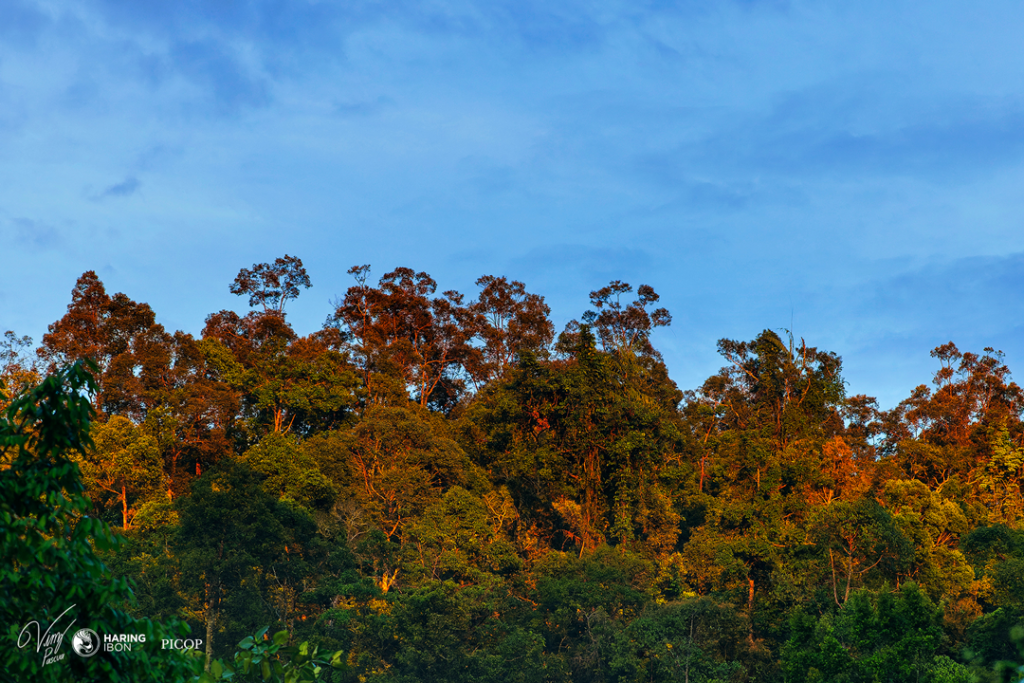

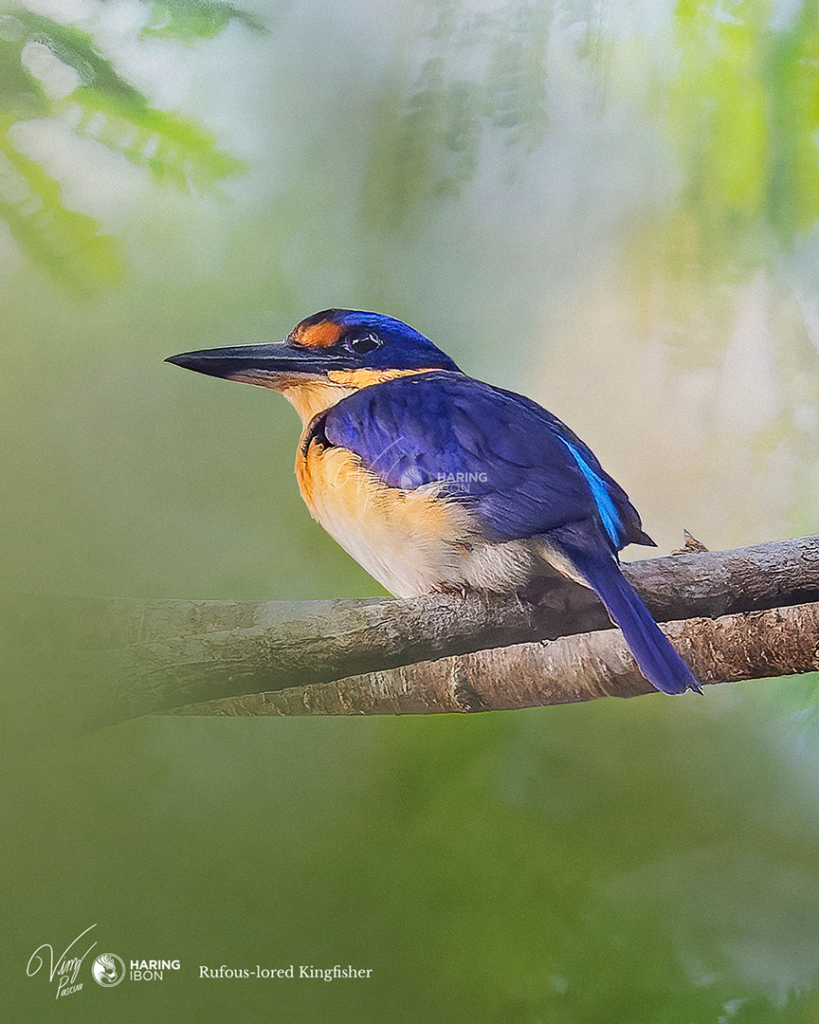
It took us more than an hour to reach the birding site inside the Paper Industries Corporation of the Philippines (PICOP) Timberland Forest. A 4×4 vehicle is needed to navigate the once smooth road network already worn out by neglect over the last decade.
Our Bird Finder Zardo Goring, as always, was ready at four in the morning and brought us to another place as the usual birding area is becoming smaller and smaller due to rampant and increasing illegal logging. We have heard of the same stories since 2009 when I first visited the place and have personally seen the sorry state more than a decade ago.
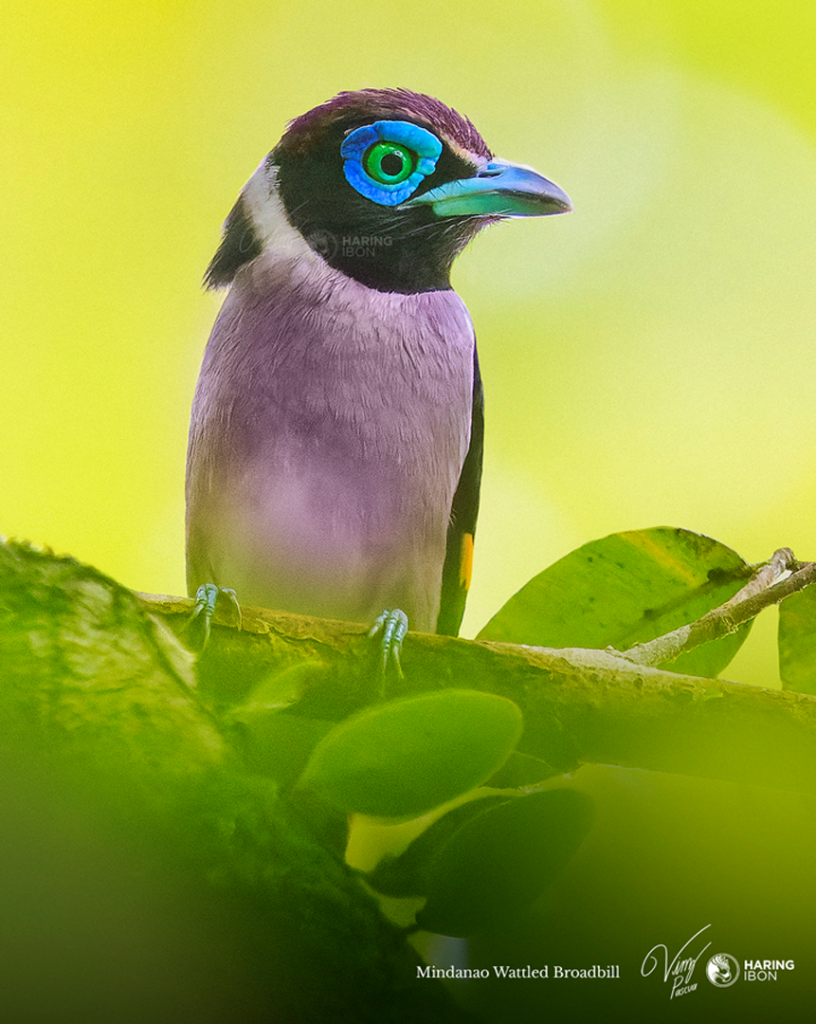
Today, the burst of chainsaw motors every couple of hours became constant engine roars during our entire birding hours, completely replacing the songs of birds, the rustling of leaves, the breeze of wind and the murmurs of streams. Yet still, we managed to see Striated Wren-Babblers, Mindanao Pygmy Babblers, Olive-backed Flowerpeckers, and Mindanao Blue Fantails.
However, the highlight for this day is the incredible Mindanao Wattled Broadbill, a species we’ve all been eager to get a photo of ever since we started planning the Mindanao exploration. A few times, we would be disturbed by the passing of habal-habal and skylab. We hiked to areas where the Celestial Monarch was previously sighted and photographed, but we were not given the chance to ever hear a tone of the song of this rarely photographed endemic whose sketch graces the cover of the recently published “Birds of the Philippines” by Desmond Allen.
The afternoon brought us to a more publicly accessed road where the Rufous-lored Kingfishers and Mindanao Hornbills answered our calls. We waited till the night came for the owls. They called but never came near us.
The birding area is part of the former PICOP which started in 1952, initially as Bislig Industries, Inc. It was a forest concessionaire of more than 180,000 hectares of forest lands integrated with pulp and paper operations. In the early 80s, it already had more than 2,000 kilometers of roads, unpaved but hardened and smoothened with crushed limestone, and was producing tens of thousands of metric tons of lumber, plywood and newsprint, and undertook the planting of fast-growing trees like Falcata, Eucalyptus, Acacia mangium, Gmelina and pine trees.
PICOP fell apart in the late 80s when it was greatly affected by various internal and external issues. In 2006, then already known as PICOP Resource Incorporated or PRI, was shut down.
Day 10 – PICOP Timberland Forest, Bislig City, Surigao del Sur

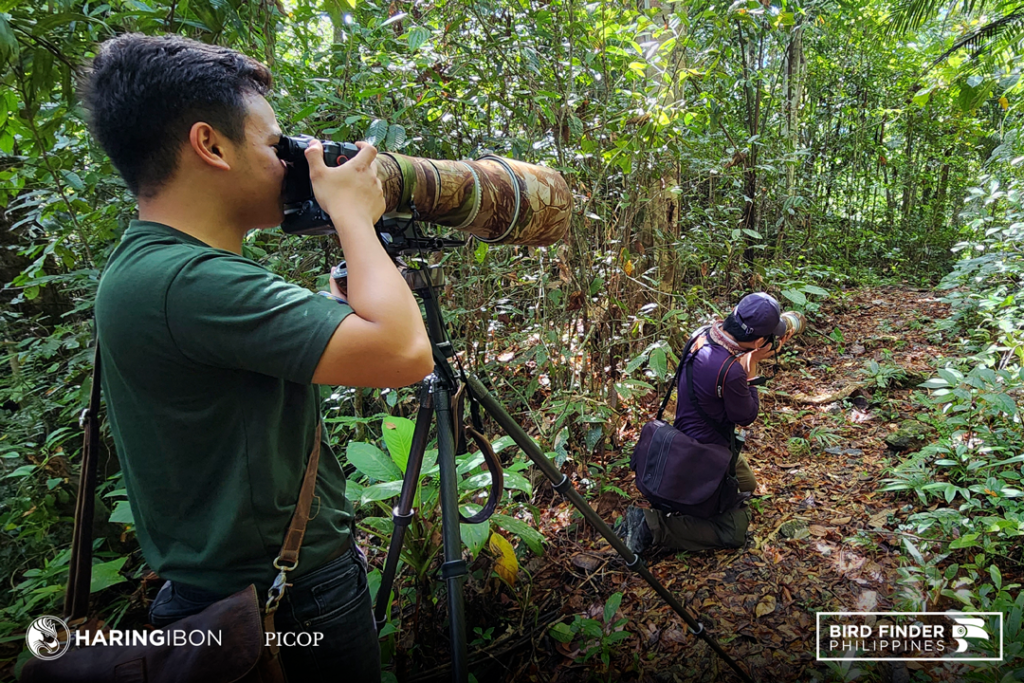
Bird Finder Zardo used to work in PICOP as part of the security unit. He was recruited to be a guide and trained by no less than Tim Fisher, one of the authors of the “Guide to the Birds of the Philippines,” the precursor of Desmond Allen’s “Birds of the Philippines.” Fisher was doing birding tours with mostly foreign birders in various parts of the country, and Zardo was his man in Bislig.
I remembered Zardo’s stories about the Philippine Eagle hunting in the timberland forest and drinking in Tinuy-an Falls, believed to be the widest falls in the country. We both saw the beak remains of the Woolly-necked Stork from a hunter who lived near the falls, maybe a portion of the skeletal remains of the last of the now extirpated species.
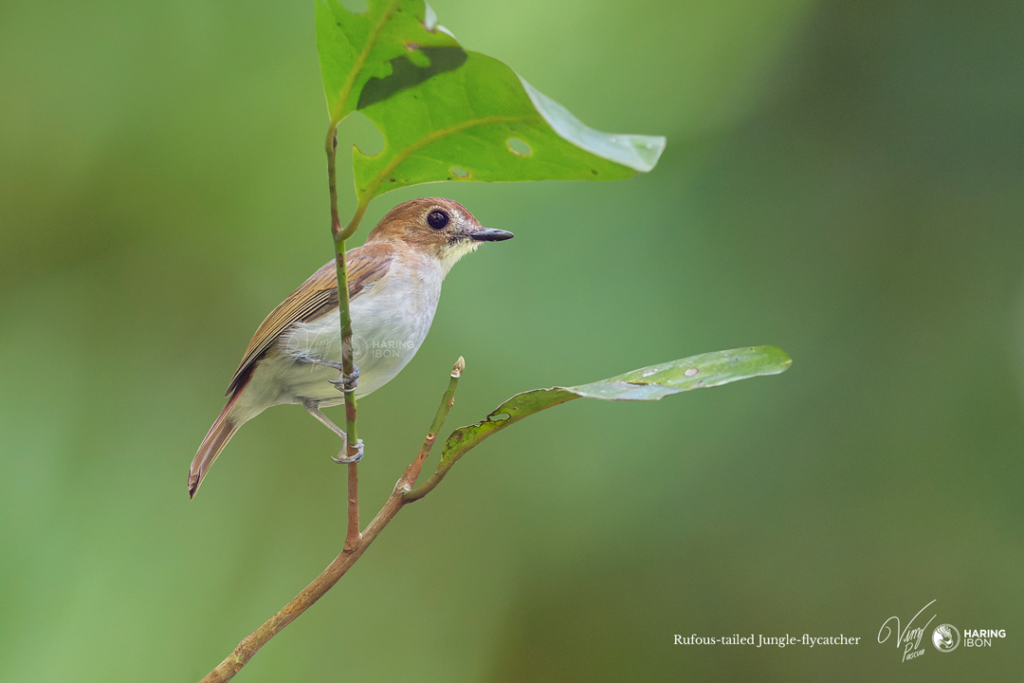
Our second day in the timberland forest was a hopeful attempt to find the Celestial Monarch who still never gave us that pleasure. The roar of chainsaws was the loudest sound we could hear the entire time we were there. Before leaving our first stop, we were surprised by a mixed-species foraging flock comprised of Southern Rufous Paradise-flycatchers, Mindanao Blue Fantails, Yellowish Bulbuls, Philippine Bulbuls, and Yellow-wattled Bulbuls.
Amongst the mixed flock was a rare and tiny flycatcher species that perched right in front of our group and then suddenly left. Only Vinz was able to photograph this small bird, and we later identified it, with the help of Desmond Allen, as a Rufous-tailed Jungle-flycatcher. We went to the site where we usually photograph the Silvery Kingfisher, but it was nowhere there.
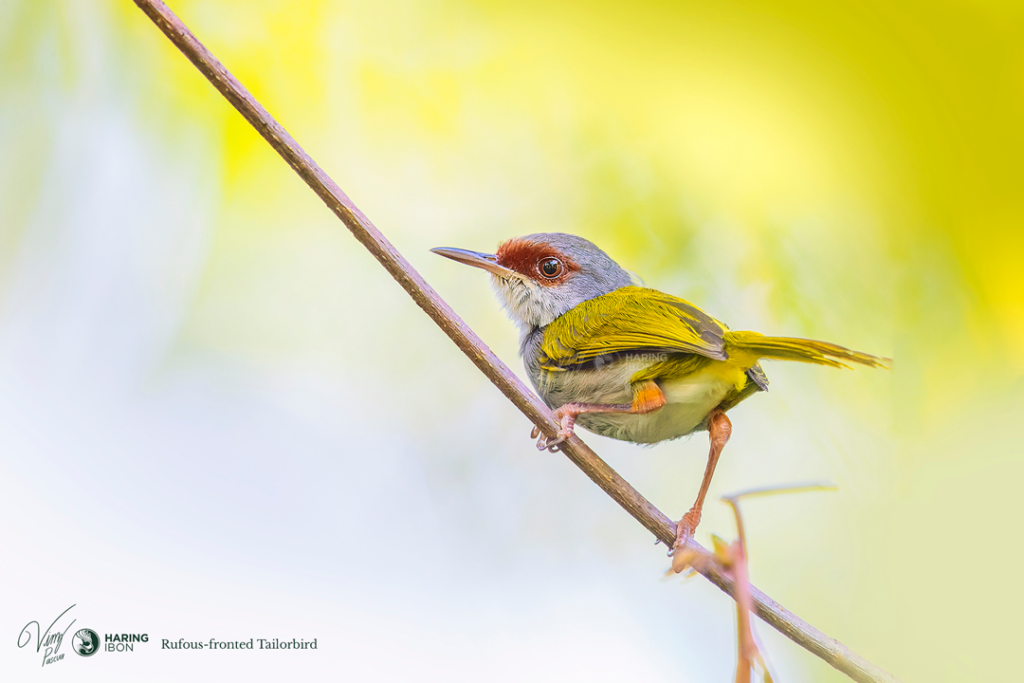
The once pristine pond and river were muddled with brown soil and the vegetation was now completely different. Years ago, we could still go near the pond and hide behind the large leaves of water plants and banana trees in the area, now we could no longer approach it, a fence already kept us at bay and we could only take the view from the road. The African Tulip tree across the street was booming with flowers and lots of sunbirds and flowerpeckers were flying around its red blooms. It could have been a bountiful harvest but the harsh sunlight did not give us the ideal image. In the underbrush, Vinz managed good close-up photos of endemic Rufous-fronted Tailorbirds.
Our birding ended with lunch with Board Member Conrad Cejoco. My first visit to Bislig and PICOP Timberland Forest was in 2009 when then Vice Mayor now Board Member Conrad Cejoco invited and sponsored birdwatchers and bird photographers from the Wild Bird Club of the Philippines (WBCP). At that time Vice Mayor Cejoco already knew that time was running out for the protection and conservation of their forest, wild birds and wildlife as illegal logging, slash and burn clearing, illegal settling, etc. are slowly eating their way into the former timberland.
It is supposed to be under government jurisdiction but it seems lawlessness lorded over it. Yet still the local government, the birders and the people, the trees, birds and wildlife too I can say, pray that the government sees this part of Mindanao and do something about the dying forest. Visiting Atty. Cejoco in his house allowed me to see once again the mounted photographs of our early images of Bislig birds. Much better and nicer images have been created since then, and it is time to replace them. Atty. Cejoco discussed his vision and goals of having a protected birding and nature park, a small portion in the timberland forest, and of mobilizing students and other advocates for its realization.
Day 11 – VPO Farm and Eco Reserve, Rosario, Agusan del Sur
Following the route that we have taken, birding PICOP Timberland Forest in Bislig is usually the last birding site of the tour. We would normally exit our way to Butuan City to board our plane to Manila. This time, however, we have allotted three more days to explore an area we have not birded before. In fact, nobody has ever birded in this place, nobody that we know. Its inclusion is a result of the partnership between Haring Ibon – Birds in Focus and Lerio Chocolates. Two years ago, Lerio Chocolates were outsourced under the brand of Haring Ibon, and as the partnership is being renewed, an invitation to visit and explore their place was made.
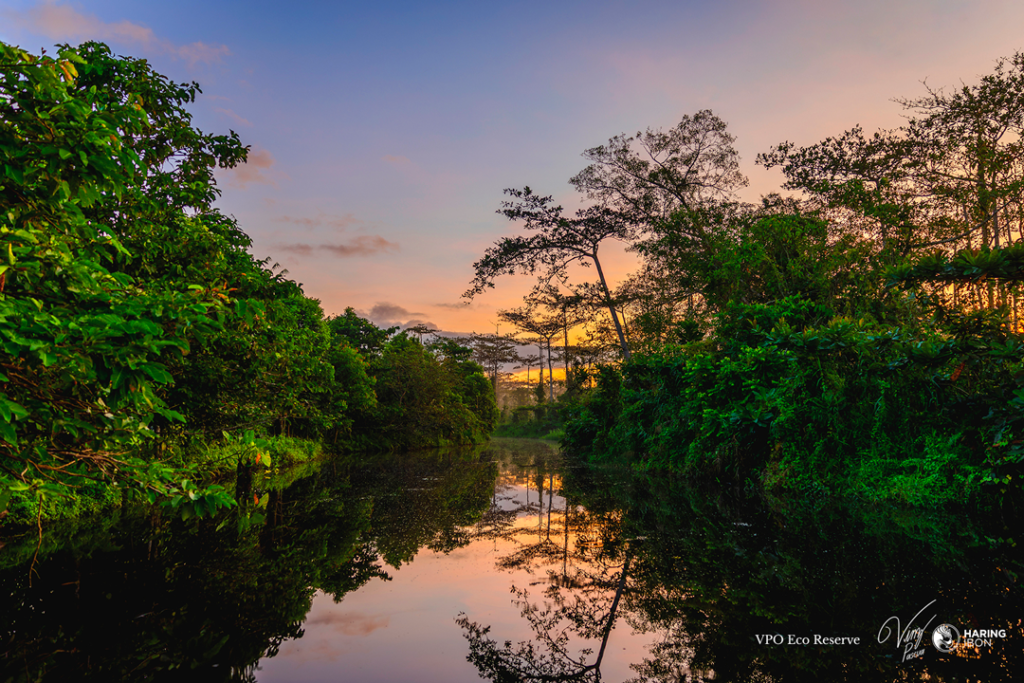

Lerio Chocolates is the chocolate product of VPO Farms and Eco Reserve, a 500-hectare family-owned land in Rosario, Agusan del Sur. Lerio is the name of the wife of the family patriarch and chairman of the family corporation Vivencio P. Ocite, Jr. (VPO), a full-blooded Manobo. The site has a farm and a protected area, a preserved marshland and forested area of mostly Talisay trees. We were met by the family representation at the Ko’on farm-to-table restaurant. Ko’on is a Manobo word for eat. Our gracious host told us to order whatever we wanted to eat. We wanted to order all, but the first servings of such delicious food already made us refuse to order for more. We were hosted in a nearby accommodation of an array of container vans converted into cozy outdoor rooms in a green lawn and well-landscaped garden. The rooms were only used for family friends, the pandemic having prevented their commercial use.

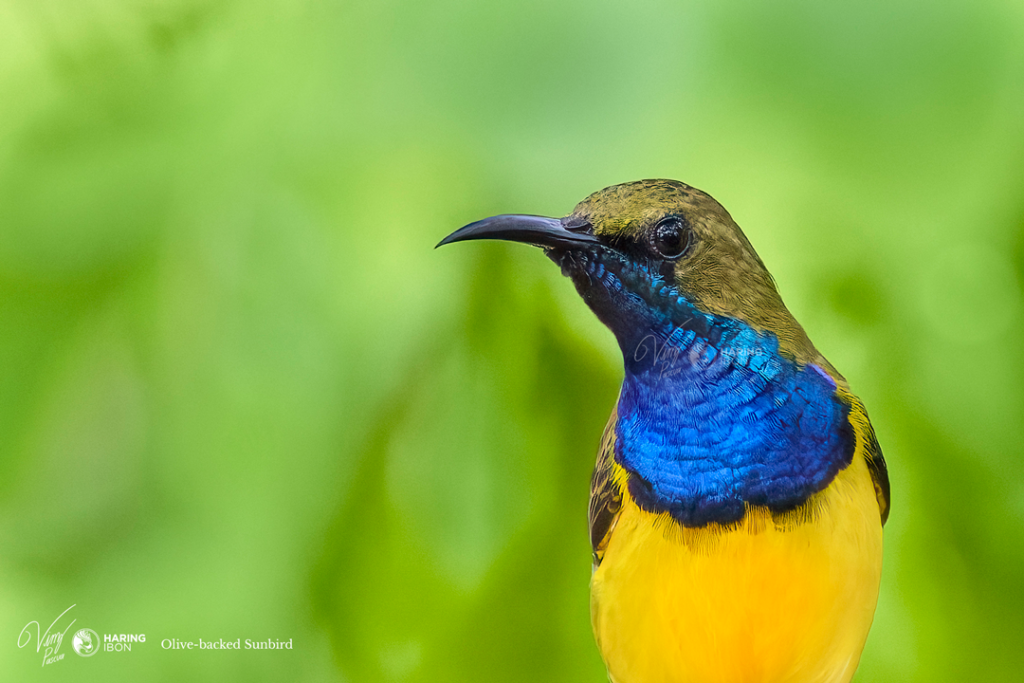
After a good night’s rest, at the break of dawn, we headed to the eco-reserve, a marshland surrounded by moat-like water. We boarded boats that were quietly paddled to bring us around the marshland where lots of monkeys could be seen, as well as birds and other animals too. We circled the marshland very curious of what lies inside, but there was no possibility of entering. So we put in our list of suggestions the building of a boardwalk inside, zigzagging towards and around the big trees where decks may be installed to allow observation and viewing of the surroundings, similar to the boardwalks in Las Piñas – Paranaque Wetland Park (Metro Manila), the SasmuanBangkong Malapad Critical Habitat and Ecotourism Area(Pampanga) and the Tanjay Mangrove Boardwalk (Negros Oriental). We recorded 46 bird species that first day. Southern Sooty Woodpeckers, Philippine Pygmy Woodpeckers, Olive-backed Sunbirds, Philippine Ducks, and Wandering Whistling Ducks were seen crossing the site. Mindanao Monitor Lizards and Philippine Sailfin Lizards were also seen basking on sunlit branches while troops of Long-tailed Macaque foraged on treetops. Landscape photos of sunrise are best in certain parts of the moat-like body of water.
In the afternoon, we went to the edge of a nearby forested area, still part of the VPO Farms and Eco Reserve. There we found a wonderful pond and habitat site where a Dimorphic Dwarf Kingfisher and Philippine Serpent Eagle were sighted. It is a perfect place to put up a hide to observe birds in the area.
Day 12 – VPO Farm and Eco Reserve, Rosario, Agusan del Sur
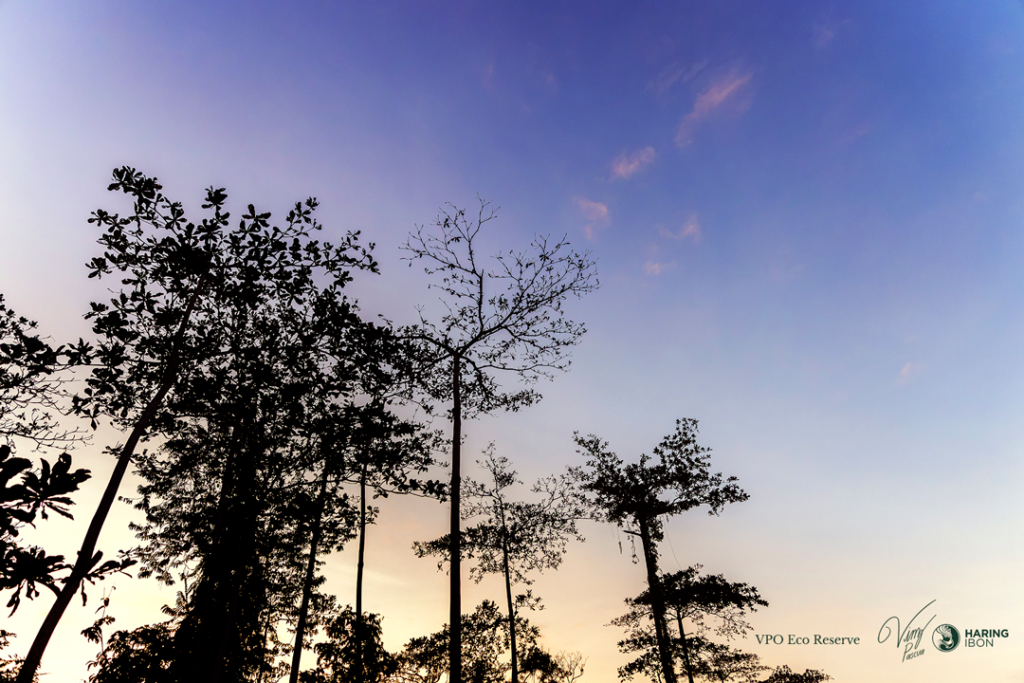

Djop, Vinz and Zardo were tasked to explore once again the marshland and the nearby forest. They birded along Solibao and Gibong Rivers and found the Southern Silvery Kingfisher, Osprey, Barn Swallows, Javan Pond-Herons, doves, egrets, and ducks while I had to return to Manila to catch up with a Board Meeting and Christmas Party of an IT company. Bird Finder Ben was able to explore the surroundings of the Ko’on restaurant and accommodation area – Hi’batan – and he shared with me his sighting of the beautiful Rufous Paradise Flycatcher. Hi’batan is Manobo for a place to lie down. Ah, the place can have some bird feeding stations and reflection pools to attract birds to give opportunities for easy birding for guests and visitors.
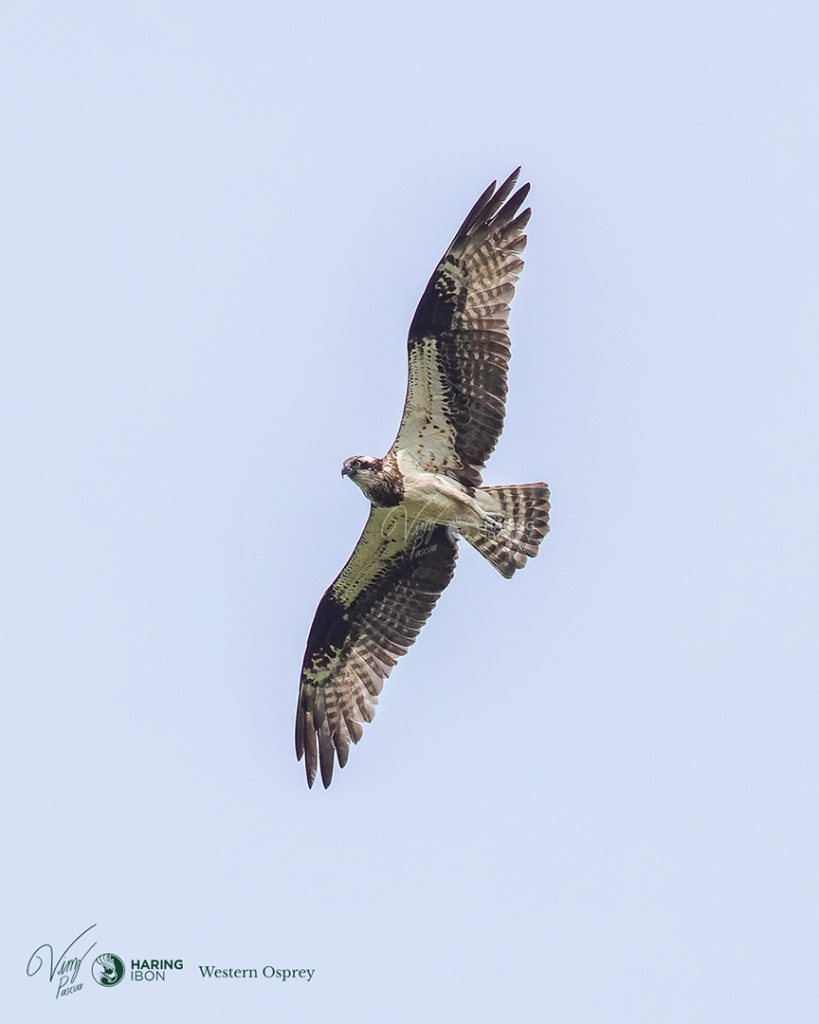
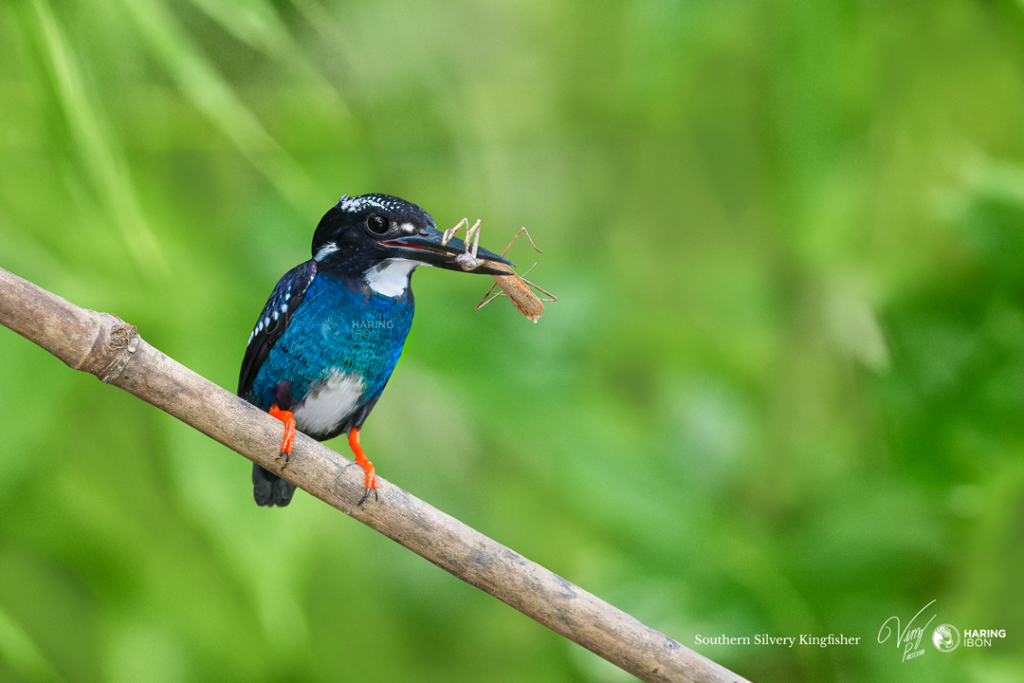
There is much more needed to be done to improve avian tourism in the country. Even if we have 254 endemic birds, tied with Brazil and second only to Indonesia, our avian tourism pales in comparison with the avian tourism in other countries. National and local government policies must be synchronized and registration processes be streamlined in order to maximize birding time. Bird feeding stations is one subject matter that must be thoroughly discussed to facilitate birding and to promote Philippine avian tourism for the rest of the birding world, taking inspiration from more established countries that have implemented successful birding and bird photography programs. Birding tour packages must also suit various kinds of interests and needs, offering different tour periods from 3 days to 21 days or more. All birding sites also need proper training and development of Bird Finders, bird guides who can cater to birdwatchers, bird photographers and nature enthusiasts with enough expertise in bird identification, good rapport and relations with local communities especially tribal groups, good communication skills and professionalism in the conduct of birding tours.
(Alain Pascua is the author of Haring Ibon – The Great Philippine Eagle, the only book that singularly focuses on the Philippine National Bird. He co-founded the Wild Bird Photographers of the Philippines. His photographs of the Philippine endemic birds have been featured in numerous publications both locally and internationally. His Ang Banogportrait of the Philippine Eagle has recently graced the cover of the historic All the Birds of the World book that features 11,524 bird species in 20,865 illustrations. He is a former undersecretary of the Department of Education)
References:
- https://www.rappler.com/life-and-style/travel/mindanao-birding-days-avian-tourism/
- https://pinoypubliko.com/life/birding-mindanao-in-12-days-part-1/
- https://pinoypubliko.com/arts/birding-mindanao-in-12-days-part-2/
- https://pinoypubliko.com/arts/birding-mindanao-in-12-days-part-3/
- https://pinoypubliko.com/commentary/birding-mindanao-in-12-days-part-4/
- https://pinoypubliko.com/arts/birding-mindanao-in-12-days-part-5/
